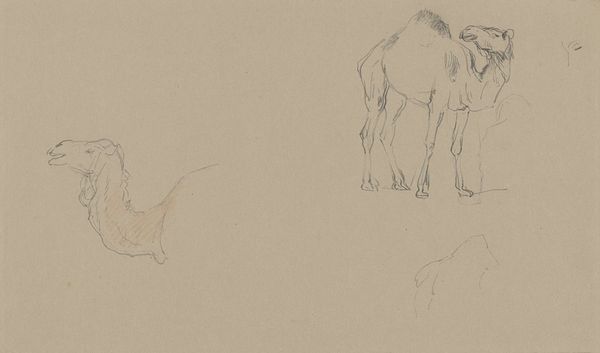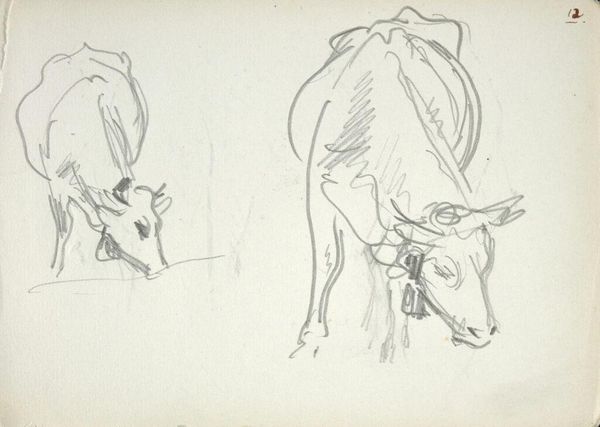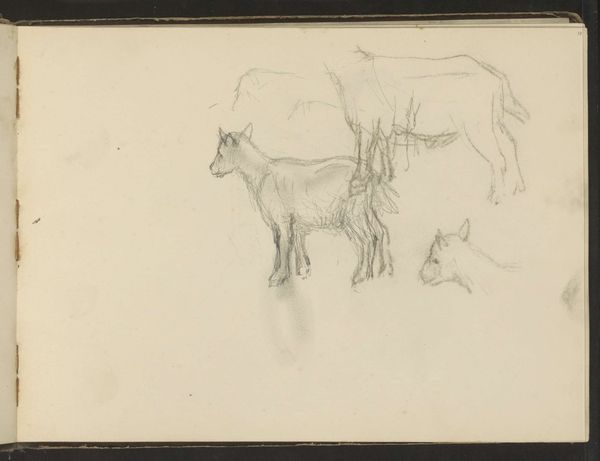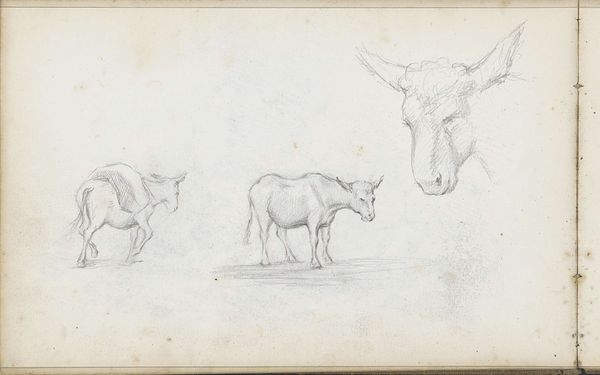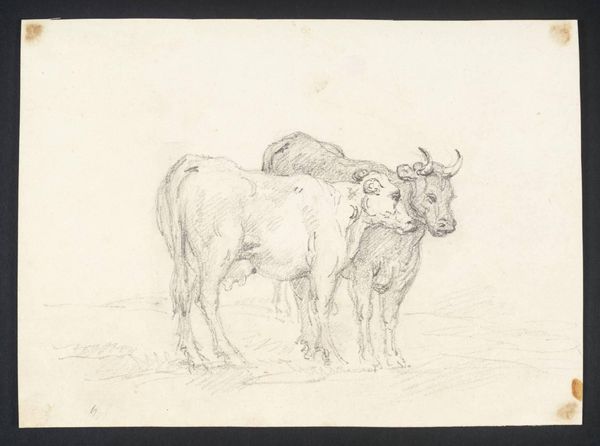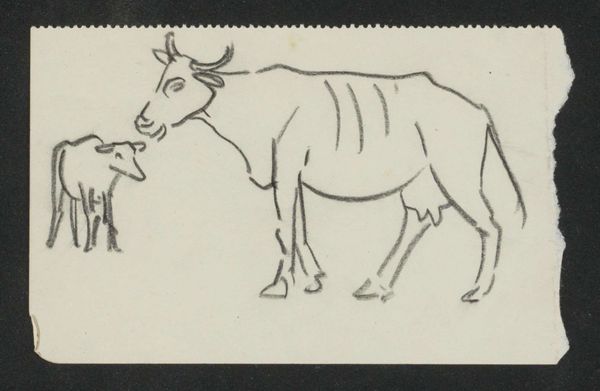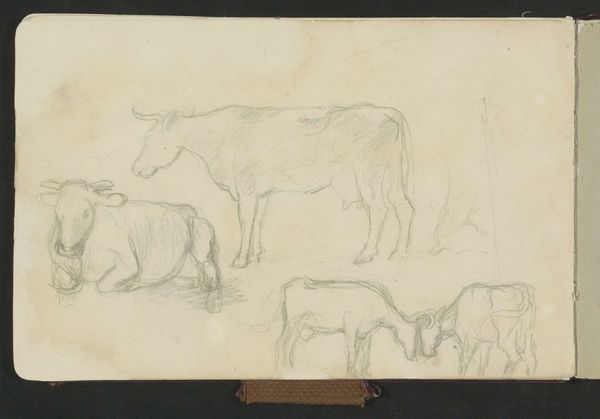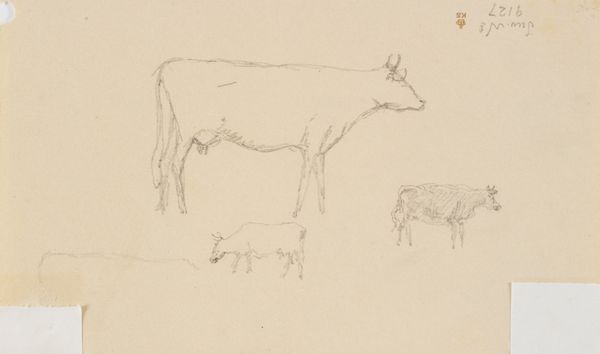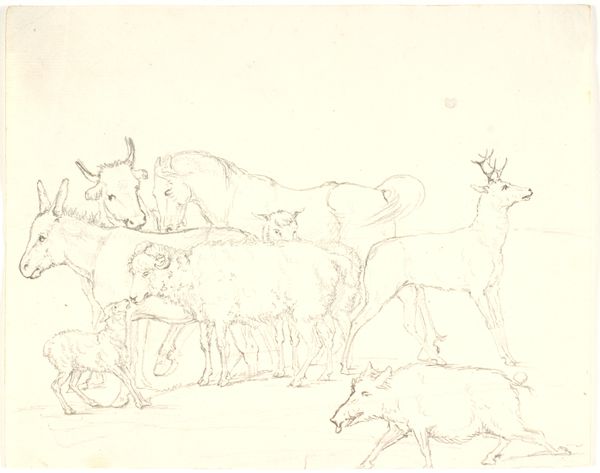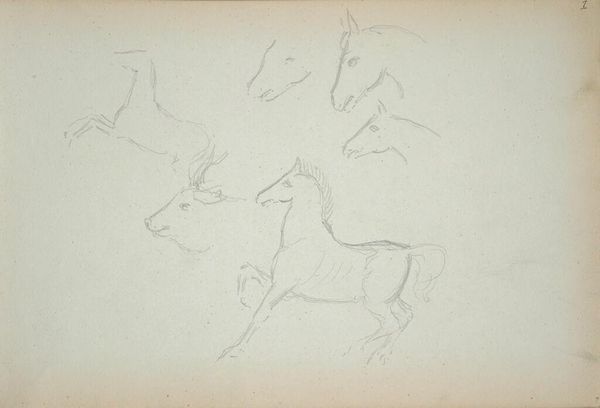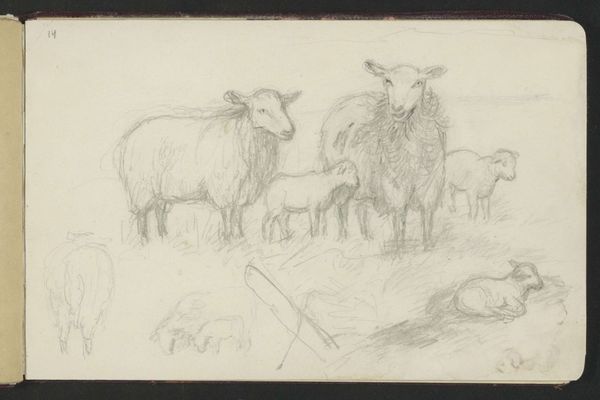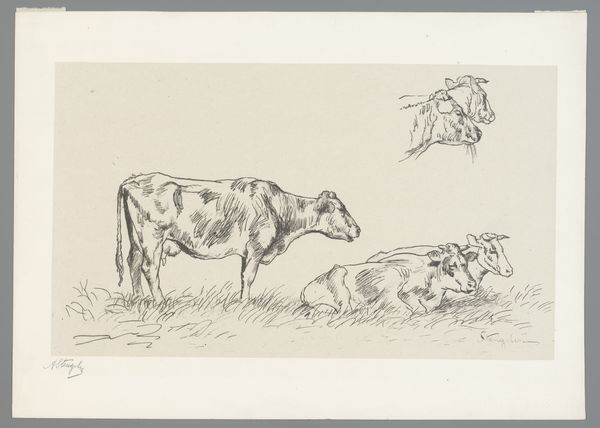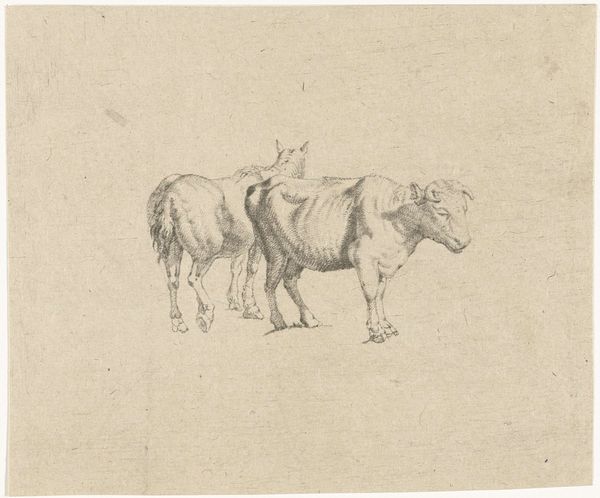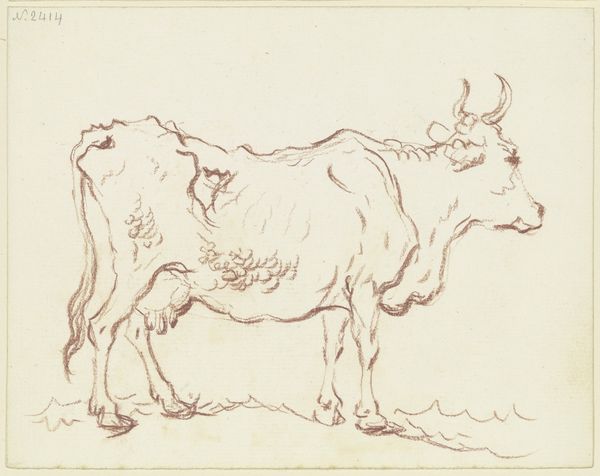
drawing, pencil
#
drawing
#
animal
#
pencil sketch
#
landscape
#
pencil
#
sketchbook drawing
#
realism
Copyright: Rijks Museum: Open Domain
Curator: Welcome. Before us, we have "Ossen" created between 1858 and 1860 by Willem de Famars Testas. It’s rendered in pencil. What’s your initial take? Editor: Sparse and yet purposeful. The starkness of the pencil against the paper really highlights the textures; I'm almost more interested in how he's laying down the material. Look at those lines forming the contours, it's like seeing the artist's hand directly. Curator: Indeed, there's a definite emphasis on process here. Sketches like this served various functions historically – often studies for larger works. Testas, deeply embedded in the 19th-century art world, used drawings like these as building blocks for more finished paintings, responding to market demands for picturesque, saleable imagery. Editor: Absolutely. But even standing alone, the pencil work gives these cows such a present quality. You can almost feel the quality of the paper too; the texture it brings really lifts this artwork and its subjects out of their mundane purpose and toward art. Curator: Interesting point about “mundane purpose.” Nineteenth-century rural imagery wasn’t always just sentimental. There's an inherent social dynamic to these depictions of animals; farm animals representing rural economies, labor, and the societal roles they occupy. It’s no simple landscape, is it? Editor: I agree completely. But for me, it’s not just about what it *represents,* but how the choice of material -- a humble pencil -- speaks volumes about accessibility, artistic labor, and even the economic realities of art production. The material itself contributes to this, highlighting the labour it took to produce these drawings, but also their ready availability in comparison to paint for instance. Curator: Precisely! Thinking about the public role of art, sketches made art production more accessible and less intimidating, aligning artistic endeavors with daily experience for potential buyers. This piece demonstrates that artistic decisions had a social consequence. Editor: Well, thinking about it now I have even more respect for these beautiful, simple depictions of such a prominent aspect of rural economies. It goes so far beyond the artistic depiction, but reaches into economics and accessibility, showing an impressive grasp of society by de Famars Testas. Curator: It's quite enriching how a seemingly simple sketch, like "Ossen," opens discussions about artistic intent, market forces, and social roles in art. Thank you for your interesting insights! Editor: Likewise. It's amazing how something as simple as a pencil sketch can offer a profound reflection of its time and context.
Comments
No comments
Be the first to comment and join the conversation on the ultimate creative platform.
